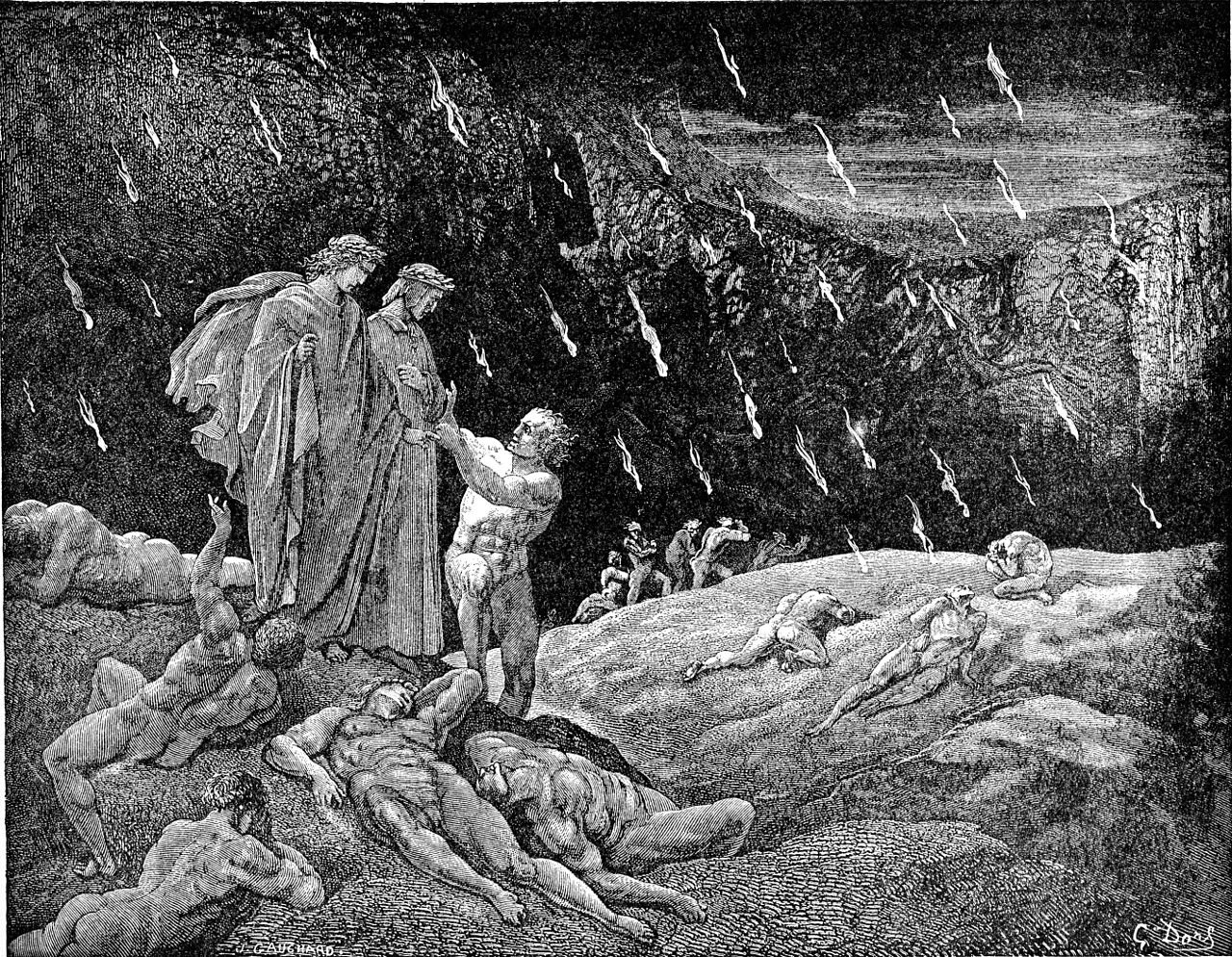11 October 2021
Sam Hill is a North American euphemism for hell or the devil. The origin is not known for certain, but it is most likely just a variation on the word hell, with a bit of personification of the devil thrown in for good measure, ala the names Old Nick, Ned, or Scratch. The phrase seems to have arisen in the 1820s.
The earliest use of Sam Hill that I have found is in a letter to the Providence, Rhode Island Independent Inquirer that was published on 12 February 1830. The letter is allegedly written by a Frenchman named Jean-Jacques Grenouille asking about the origin of the phrase. The letter and Monsieur Grenouille, himself, are almost certainly fictions invented by the paper’s editor. But even though it’s fictional, the letter shows that Sam Hill was in common use at the time—its use seems to have been something of a fad—but also was probably a relatively recent coinage. The letter reads in part:
When I walk on the deck, I see one sailor man have one wheel, which he turn round first au droit, to the right, then turn him to the left, and I speak him, “Why for what you so moch labor always?”—and he say, “Sair, the dam ship steer like Sam Hill.” Well I not can understand, and then I go down in my chamber cabin, and I look in [line indistinct] not find Sam, but I ask the captain, and he laugh and say, “Sam one man’s name;” so I look and find Hill, one little mountain, but still I not understand what was Sam Hill.
Well, in three four day more, one night, the ship rock very moch, and the captain ask our officier, “What wether is on deck?” and he say, “it blow like Sam Hill.” Some four day more the ship go in New-York, and I walk on the land and stay for short time, and then I go in one batiment de vapeur, one steam-boat, and go at Providence. By and by one man what was not never been before in one steam-boat, he was look in the water, and he say, “I snum, she foam at the mouth like Sam Hill!” Ma foi! more Sam Hill.
[...]
Monsieur le Prentair, if you can discover what is Sam Hill, or any of your correspondent, will you make me oblige in write one letter to me?
The elided section contains many more instances of the writer encountering people, from all strata of American society, using the phrase Sam Hill.
Another plausible explanation for Sam Hill was proffered by A.E. Sokol in a 1940 article in the journal American Speech. Sokol points out that Carl Maria von Weber’s opera Der Freischütz premiered in America in 1825, the first Continental opera to play in the States. That opera features a demon named Samiel, and Sokol suggested that Sam Hill is a variation on that name. Samiel could easily become Sam Hill, and the dates work—at least until someone unearths a use that antedates 1825—but Occam’s razor suggests that a variation on hell is a more parsimonious explanation.
Sources:
American Heritage Dictionary, fifth edition, 2020, s.v. sam hill, n.
Green’s Dictionary of Slang, 2021, s.v. Sam Hill, n.
Grenouille, Jean-Jacques. Letter. Independent Inquirer (Providence, Rhode Island), 12 February 1830, 1. Readex: America’s Historical Newspapers. (The database’s metadata is incorrect, giving an 1829 date, so use that year if you search for this source.)
Oxford English Dictionary, second edition, 1989, s.v. Sam Hill, n.
Sokol, A.E. “What the Sam Hill?” American Speech, 15.1, February 1940, 106–09. JSTOR.
Image credit: Gustave Doré, 1861. Public domain image.

